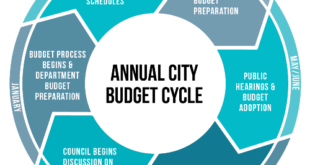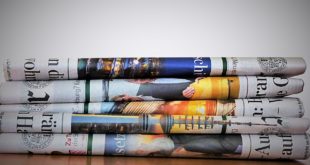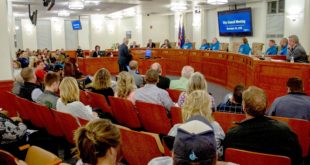By Kevin Slimp
An editor in South Carolina wrote to me yesterday, “I’m always amazed at your productivity.”
I get that a lot these days. Since yesterday, I’ve written an opinion piece that’s already filling my inbox with responses from readers; my fictional weekly serial, The Good Folks of Lennox Valley; and my alarm just reminded me that I’m on deadline to write my column for newspaper professionals.
Looking over my email, I noticed there has been an increase in the number of folks asking for technical advice over the past few weeks. Perhaps work slowed down a bit over the holidays, allowing people more time to write.
Whatever the reason, I’ve always believed in “dancing with the one who brung ya,” so it seems like a good time to answer some questions from readers.
 From Lora, in Nebraska
From Lora, in Nebraska
Hi Kevin: I am trying to tone down the total coverage area for our presses in one easy step. We have a process that is supposed to tone all of our photos for our press so they are consistent, but the total coverage area is still too high.
I can take each photo separately and fix the problem, but I am wondering if there is something in Distiller when converting the entire newspaper page that would fix everything all at once.
We have a very old press so we need the total ink coverage to be 220.
Hi, Lora. Ink coverage is a funny thing. Over the years, the perfect ink coverage will change on a press, due to changes in paper, ink and the press itself. It would be nice if all your ink issues could be handled when creating the PDF, but life never seems to work that easily. It sounds to me like you need to run some press tests (you might need someone from the outside to help with that) to determine the optimum color settings for your press. These numbers are rarely the same between two presses. Once that’s done, an action can be created in Photoshop which does most of work for you, including specifying the ink settings, when your pictures are saved.
From Steve, in Minnesota
Kevin: I am thinking about getting a little Apple server, around $1,000 or so, that would serve as a drop box for all of our layout files. To my understanding, however, a server can do more than provide storage. I am wondering if you think such a move would help fix my network problems. Does that make sense?
Steve and I emailed back and forth a few times before I finally sent this recommendation, which Steve said he would follow: If you only need a server for file sharing, which is what the vast majority of small newspapers use them for, you might be best off to get a NAS/Ethernet Drive. This is a stand-alone drive that plugs into your network and acts as a file-sharing server. If you get a good one, like a Synology, your cost will be around $700, and that will include a main drive and three backup drives, so you never lose your data.
From Joe, in Tennessee
Hey, Kevin. There’s no telling where in the world you may be tonight, but I feel sure that you are having a good time. The last time I wrote, you taught me how to convert color to grayscale in Acrobat. Now how do I convert RGB to CMYK?
It’s pretty much the same process, Joe. Find your “Print Production” tools in Acrobat. Once there, check the box by “Output Intent” and select “US Web Uncoated v2.”
From Klaudia, in Wisconsin
Kevin: We are in the process of checking out new computers with updated software for our business. What is your take on the iMac vs. the Mac Pro? What we see is that the iMacs can have more storage, bigger screens and are cheaper. We use the Creative Suite for most of our designing. What do you think?
That’s a good question, Klaudia. And the answer is simple: Go with the iMac. If you were a movie producer or videographer, you might consider the Mac Pro, but for design and production, you would probably never notice a difference in speed between the two computers. So save $1,000 or so to buy my dinner next time I’m in Wisconsin.
And let me share one last bit of advice
Each year, I direct a program called The Institute of Newspaper Technology, held on the campus of The University of Tennessee in Knoxville. Over the years, we’ve had attendees from newspapers in just about every state and province, and we seem to grow each year.
We will be holding our 20th session October 6-8, 2016. To celebrate, we will be inviting more trainers, bringing back some of the favorites from past years, offering more classes, and hosting a 20th Anniversary Gala on Friday evening.
If you’ve been before, come celebrate our anniversary with friends from previous sessions. If you’ve always wanted to attend, this is the year to come.
Mark your calendars for October 6-8, 2016. Enjoy the beautiful weather, the Smoky Mountains, and what has come to be known internationally as the finest annual training event in the industry
Find information at: newspaperinstitute.com.
 Nevada Press Association The best in Nevada journalism since 1924
Nevada Press Association The best in Nevada journalism since 1924



